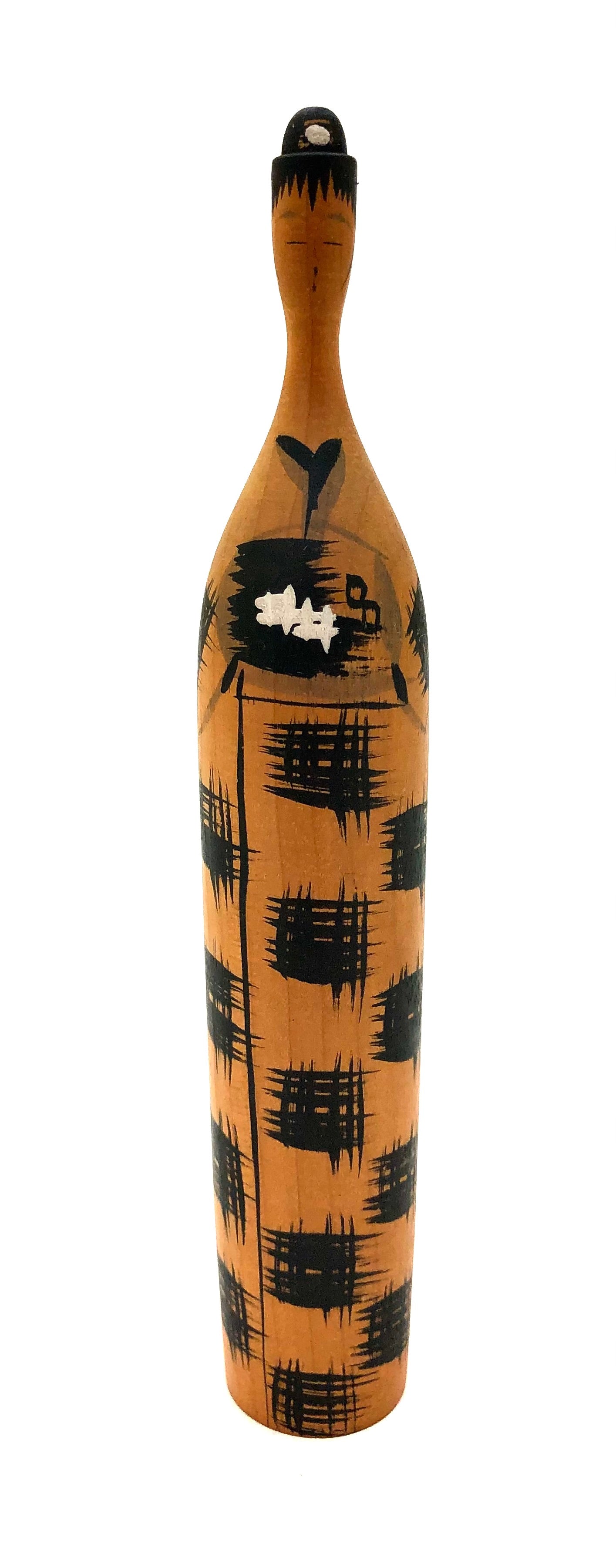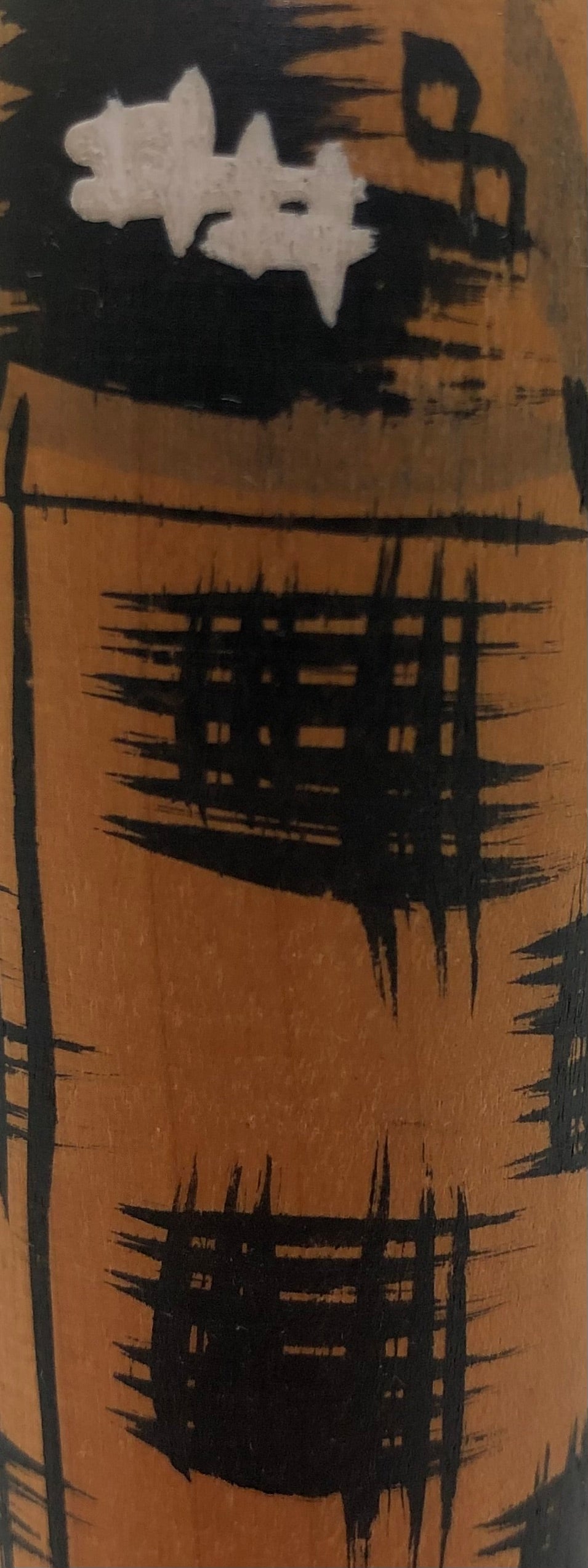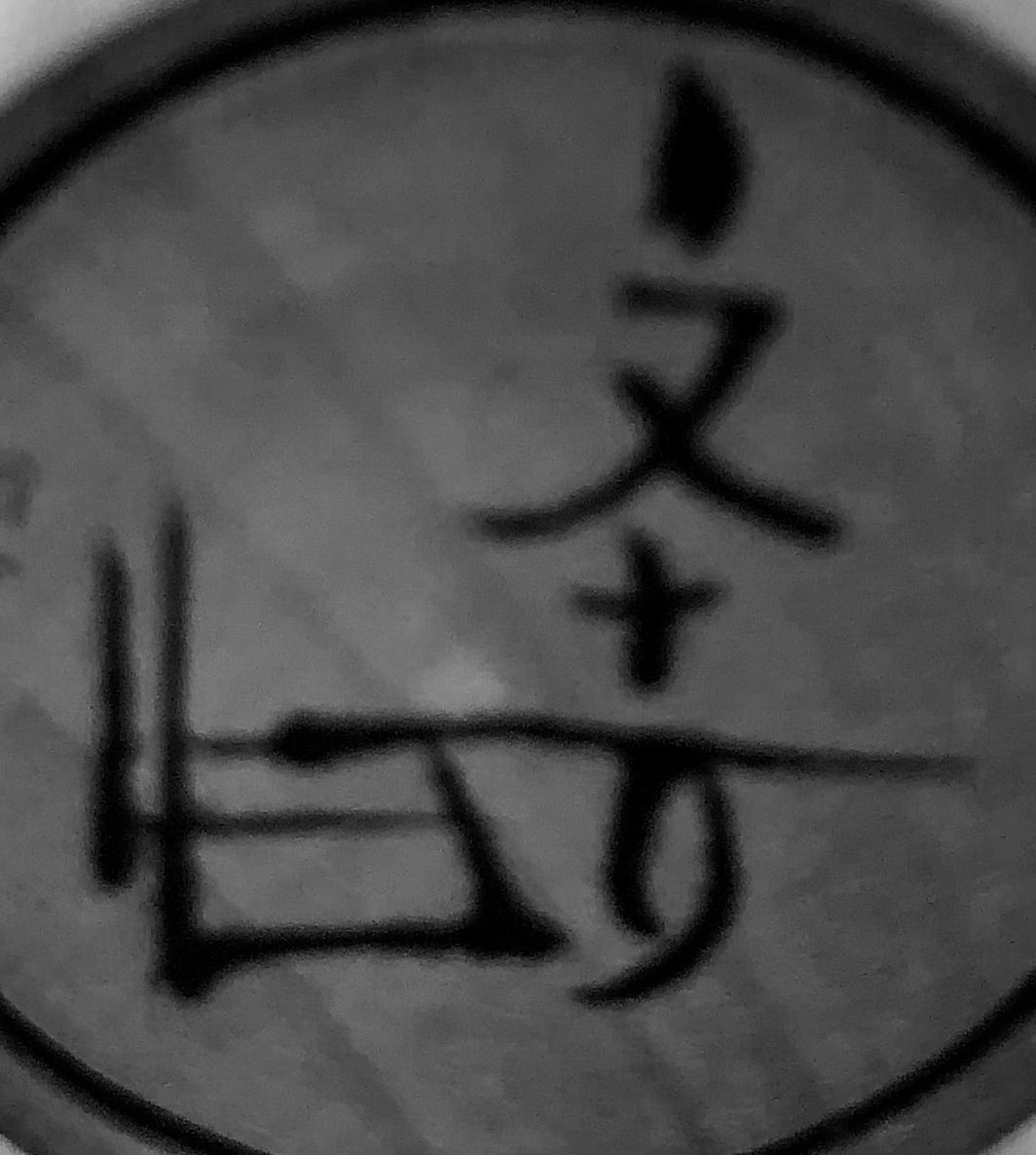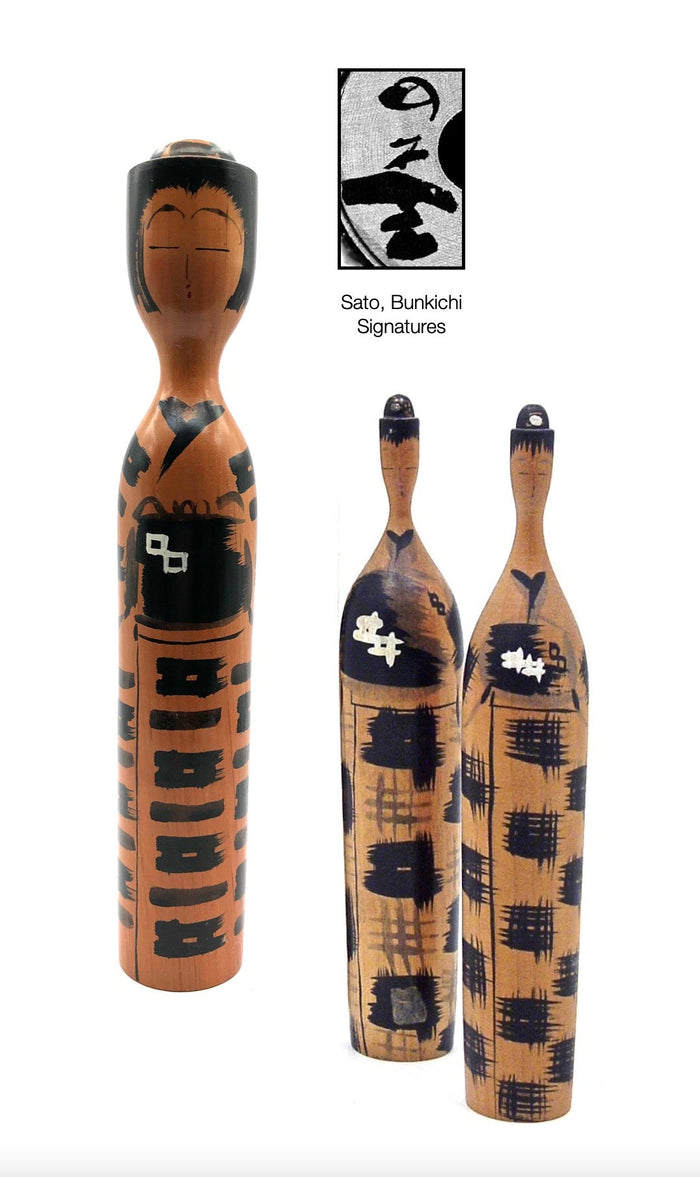


Vintage Japanese Sosaku Kokeshi entitled: “Kasuri | Ikat” by Sato, Bunkichi, 1922-2008
Dimensions: 7-0”h
Due to the head shape Sato Bunkichi's dolls are easily recognized, but very rare and hard to find. We have never see this form of Sosaku Kokeshi which is extremely unusual and unique emphasizing Sumi-e painting fully detailing the ‘Ikat’ motif incorporated into the body of the garment (Yukata). The word ‘Ikat’ comes from the Malaysian word ‘to tie’ fabric. This technique became very popular in Japan in textile design and wonderfully rendered on a one piece cherry wood form. This specific version of this doll has a “pin head” unusual and abstract face having a feathered “Bob” hairstyle and a ‘Mage’ or topknot all in black with horizontal eyes, and arched eyebrows. The doll is signed on the bottom and published in Sosaku Kokeshi: Celebrating the Major Artists of the Creative Movement, 2022 by Evans & Wolf.
Condition: Excellent, outstandingly, exceptional, and beautiful condition. No chips, cracks, breaks, missing pieces or restoration, and retains its original details and finish. The piece meets all the standards of the collectible Sosaku Kokeshi.
For additional information on the artist/family go to: https://mingeiarts.com/collections/artisan-woodworker-sato-bunkichi-1922-2008
Born in Tendo, Yamagata Prefecture, to a family of traditional Tougatta Kokeshi craftsmen, Sato-san did his early training under Master Tougatta artist Sato, Zushizo. He moved to Matsushima City, in Miyagi, and began creating Sosaku dolls, using a very traditional Ikat patterning for his dolls. Due to the smaller head shape than normally seen, Bunkichi-sans dolls are easily recognized, but very difficult to find at private sales and auctions in Japan.

Artisan
Woodworker: Sato, Bunkichi
1922-2008
Biographical History:
Born in Tendo, Yamagata Prefecture, to a family of traditional Tougatta doll makers. Bunkichi did his early training under Master Tougatta artist Sato, Ushizo. He moved to Matsushima City, in Miyagi, and began creating Sosaku dolls, using a very traditional Ikat patterning for his dolls.
As collectors, we felt it was most important to represent all Sosaku Kokeshi artists, whether or not each artist has a written account of his/her life. We show the diversity of cultural values and the creative work produced by a multitude of artists. In researching old writings through articles and books that remain, it is evident that the Kokeshi Craftsperson not only created beautiful forms as toys, but also kept alive cultural values, customs, and fashion through the extensive representations of Kokeshi dolls. The beauty is in the doll and not the signatures, for most masters never signed their dolls. Later they named the dolls, but only when Westerners insisted on signatures because they did not know the artists, so the carvers began to sign their works, for the carvers wanted to promote sales to make a living, during the seasons that did not provide an environment to continue their otherwise daily work.
Collector's note – descriptive qualities, standard characteristics & ornamentation styles:
Due to the smaller head shape than normally seen, Sato Bunkichi’s dolls are easily recognized, but very rare and hard to find. The word ‘Ikat’ comes from the Malaysian word ‘to tie’, because the loose threads are tied into bundles using grasses or wax-treated cotton to specify where the dye is able to sink in and color the thread. This technique developed independently across many different cultures. Some Ikat emphasizes precision, where it is difficult to distinguish it from block printing. The Japanese learned about this type of printing from the Dutch traders in the early 18th century. Here the artist masterfully incorporates this motif onto the bodies of these simple figures.
Explore & Learn More about Woodworker: Sato, Bunkichi